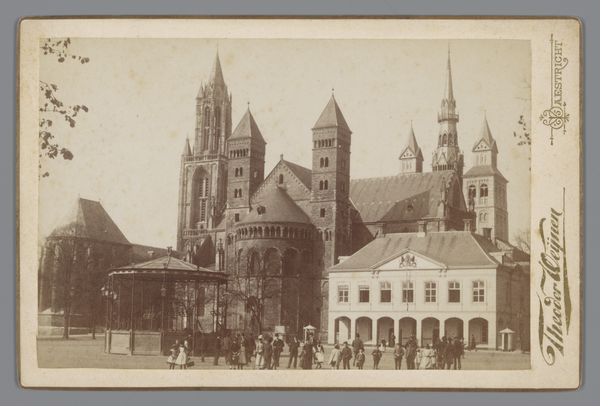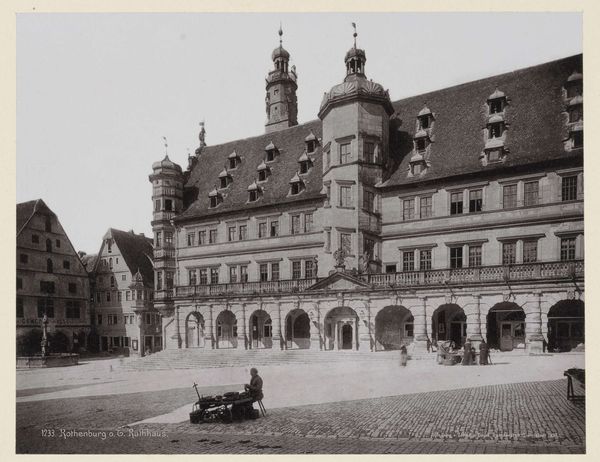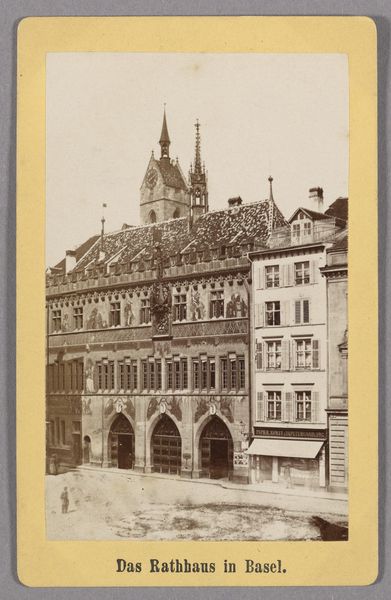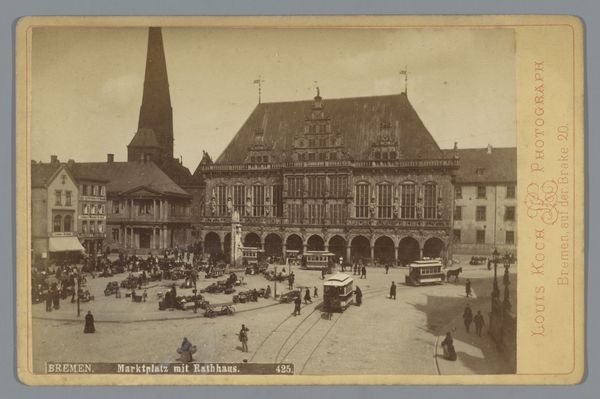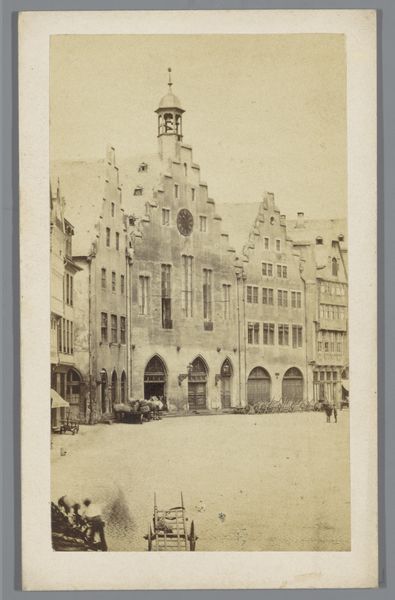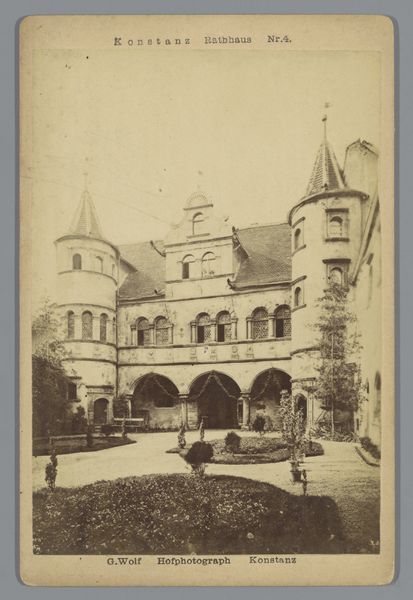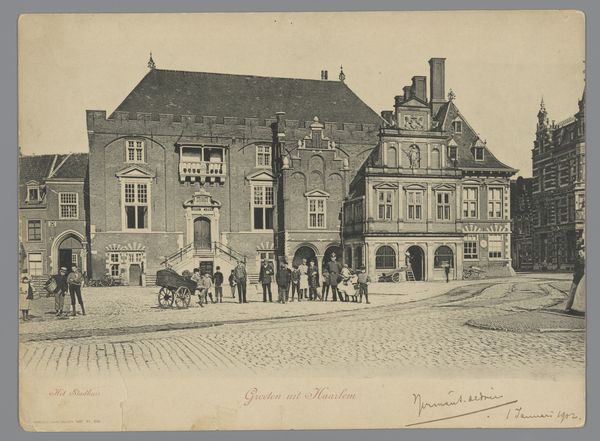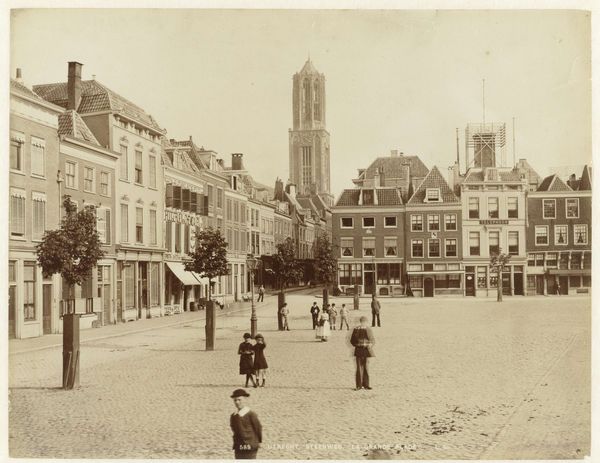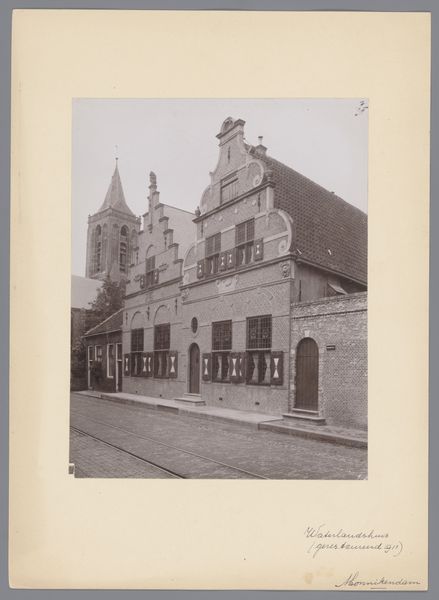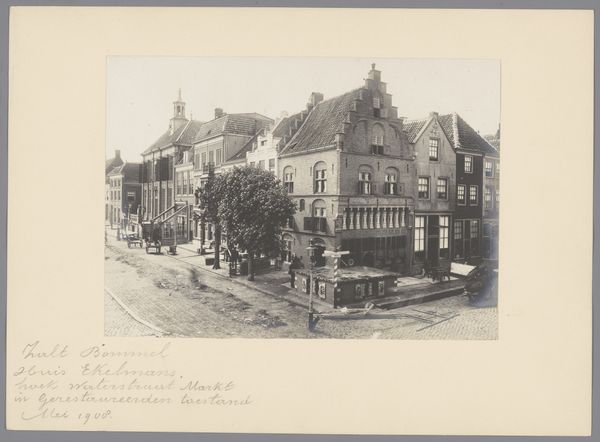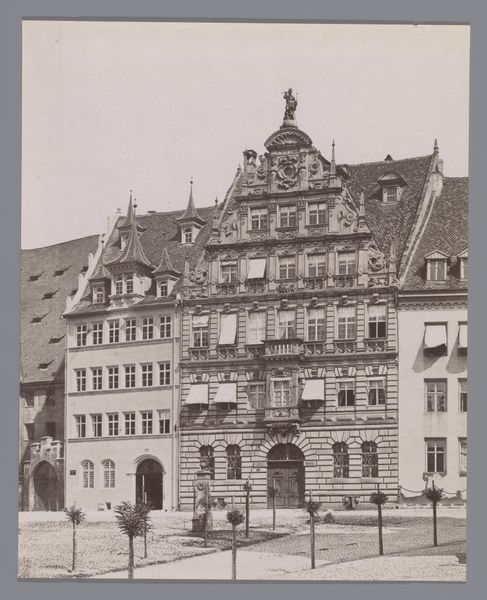
photography, architecture
#
landscape
#
historic architecture
#
photography
#
romanesque
#
historical photography
#
19th century
#
cityscape
#
architecture
Dimensions: height 228 mm, width 286 mm
Copyright: Rijks Museum: Open Domain
Curator: This is an image called "Raadhuis van Hildesheim," taken sometime between 1880 and 1900 by E. Mertens & Cie. What’s your immediate impression? Editor: Bleak grandeur, I'd say. The building dominates, obviously, but it feels lonely in that vast square. And the gray tones amplify this sense of solitude, like a forgotten monument. Curator: That desolation perhaps speaks to the image's historical context. This photograph likely served as a visual record of civic pride, of burgeoning city life memorializing that iconic Town Hall, during a time of intense urbanization and societal shifts. Editor: Makes sense. Yet, even though the Town Hall is a gorgeous piece of Romanesque architecture, the composition feels so…impersonal. You see the effort in rendering all those intricate architectural details. Curator: I'm picking up your threads here about “impersonal” perhaps alluding to photography's nascent phase as an accepted fine art medium at this point in time. Despite all those details meticulously rendered by photographic process, perhaps some felt that emotional essence of “Art” remained out of reach for cameras then? Editor: Precisely. The square, though large and clearly important, appears empty, save a few barely-there figures in the background. It almost emphasizes the emptiness within progress, and new urbanity, don't you think? Curator: Fascinating take. I tend to consider this image through a different lens. Photography offered ordinary folks access into realms previously restricted exclusively painters’ palettes; thus opening conversations about truth, and subjective experiences across social strata… Editor: A democratization of seeing? True! Yet even with that access, there’s a lingering melancholy. The sepia tones enhance a sense of distance, of witnessing a time long past. Curator: A valid, affecting, perspective. It calls attention towards complex issues embedded deeply around documentation, perspective, and emotional weight when representing our shared past and urban transformations! Editor: Well, that makes it something more than a simple historical document, doesn’t it? A time capsule holding complex emotions!
Comments
No comments
Be the first to comment and join the conversation on the ultimate creative platform.
